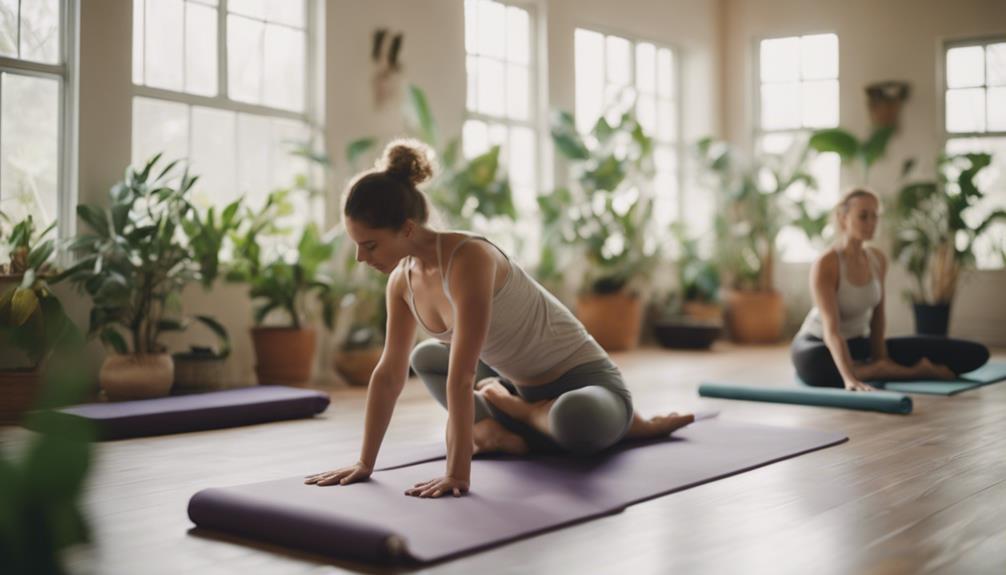How Long Yoga Mat Last

Yoga mats are essential tools for practitioners of all levels, providing comfort, support, and stability during their practice. However, many yoga enthusiasts often wonder, “How long does a yoga mat last?” This question is crucial not only for budgeting but also for ensuring that your practice remains safe and effective. In this blog post, we will explore factors affecting the lifespan of a yoga mat, how to extend its durability, and signs that it may be time for a replacement.
Understanding the Lifespan of Yoga Mats
The lifespan of a yoga mat can vary significantly based on several factors, including the material, usage frequency, and maintenance. Generally, a high-quality yoga mat can last anywhere from 1 to 5 years, with some premium options lasting even longer. For instance, mats made from durable materials like natural rubber or high-density PVC tend to have a longer lifespan than cheaper alternatives made from EVA or TPE. Understanding these materials will help you make an informed decision when purchasing your next yoga mat.
Material Matters: Different Types of Yoga Mats
When considering how long a yoga mat lasts, it’s essential to understand the various materials used in their construction. Here are some common types of yoga mats and their average lifespan:
– PVC (Polyvinyl Chloride): Known for its durability and affordability, PVC mats can last 2-5 years with proper care.
– TPE (Thermoplastic Elastomer): Eco-friendly and lightweight, TPE mats typically last around 1-3 years.
– Natural Rubber: Highly durable and providing excellent grip, natural rubber mats can last 3-5 years.
– Cotton or Jute: These mats are more sustainable but may not last as long, typically around 1-2 years, depending on use.
Related Posts:
Choosing the right material based on your practice style and frequency can significantly impact how long your yoga mat lasts.
Frequency of Use: How Often Should You Practice?
The frequency of your yoga practice plays a vital role in determining how long your yoga mat lasts. If you practice daily, your mat will experience more wear and tear compared to someone who practices once a week. Generally, if you practice more than three times a week, it’s advisable to invest in a higher-quality mat that can withstand the rigors of frequent use. Additionally, consider rotating between two mats if you practice frequently, allowing each mat to rest and recover from use.
Maintenance Tips for Extending Your Mat’s Lifespan
Proper maintenance can significantly extend the life of your yoga mat. Here are some tips to keep your mat in optimal condition:
1. Regular Cleaning: Wipe down your mat after every use with a damp cloth or a mat cleaner to remove sweat and dirt.
2. Deep Cleaning: Every few weeks, wash your mat according to the manufacturer’s instructions, either by hand or in a washing machine if it’s machine-washable.
3. Drying: Always air dry your mat away from direct sunlight, as excessive heat can cause materials to break down.
4. Storage: Roll your mat instead of folding it and store it in a cool, dry place to prevent creasing and damage.
By following these maintenance tips, you can enhance the longevity of your yoga mat and ensure a safer practice.
Signs Your Yoga Mat Needs Replacement
Over time, even with excellent care, your yoga mat will eventually show signs of wear. Here are some indicators that it may be time to replace your mat:
1. Slippery Surface: If you notice that your mat has become slippery, even after cleaning, it’s a sign that the grip has worn down.
2. Cracks and Tears: Visible damage such as cracks, tears, or holes compromises the integrity of your mat and can lead to an unsafe practice.
3. Foul Odor: A persistent smell that doesn’t go away after cleaning may indicate that bacteria have built up, making it unhygienic to use.
4. Lifeless Feel: If your mat no longer provides the cushioning and support it once did, it’s time for an upgrade.
Being aware of these signs will help you maintain a safe and enjoyable yoga practice.
The Environmental Impact of Yoga Mats
When considering how long a yoga mat lasts, it’s also important to think about the environmental impact of your choice. Many mats are made from synthetic materials that can take years to decompose. However, eco-friendly options like natural rubber and jute are biodegradable, making them better choices for environmentally-conscious practitioners. Additionally, investing in a high-quality mat that lasts longer reduces waste and the need for frequent replacements.
Cost vs. Quality: Finding the Right Balance
While it’s tempting to opt for the cheapest yoga mat available, remember that you often get what you pay for. A lower-priced mat may save you money upfront, but if it needs to be replaced frequently, it could end up costing you more in the long run. When asking, “How long does a yoga mat last?”, consider the quality and warranty. Premium mats often come with longer warranties, reflecting their durability and the manufacturer’s confidence in their product.
A Final Word on Choosing Your Yoga Mat
In conclusion, the lifespan of a yoga mat varies greatly depending on material, usage, maintenance, and care. By understanding these factors, you can make an informed decision and choose a mat that fits your practice style and longevity needs. Regular maintenance and being aware of wear signs will ensure that your mat remains a safe and supportive tool throughout your yoga journey. So, the next time you consider purchasing a new mat, remember to weigh the options carefully for a more sustainable and enjoyable practice.
With these insights, you’re now better equipped to decide how long a yoga mat lasts and what you can do to maximize the life of your investment. Happy practicing!